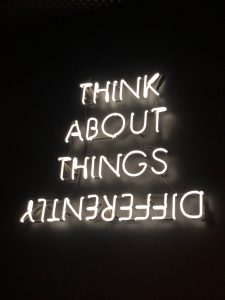What is Critical Thinking?
Andrew Gurevich

Critical Thinking is Critical
Thinking that is productive, focused, and intentional is at the center of all effective learning. By applying a sequence of carefully articulated thinking skills, students can develop an increasingly sophisticated understanding of the cognitive processes they can use whenever they encounter complex problems, unfamiliar information, and new ideas. In addition, familiarity with the growing body of knowledge about how the brain works (and continuously animates the practice of effective critical and creative thinking strategies) can increase students’ motivation for, and management of, their own learning. They become more confident and autonomous problem-solvers and critical thinkers.
Through careful analysis of language and the study of the techniques of persuasion, this text emphasizes the power of words and ideas to shape opinions, attitudes, and behavior. Students develop the critical thinking skills necessary to recognize logical fallacies and manipulative communication through the analysis of political rhetoric, commercial media, and other relevant materials. Students also create arguments based on well-reasoned analyses and supported by sufficient and relevant evidence, logic, and references.
But critical thinking DOES NOT mean being critical of another person or their ideas, necessarily. IT DOES mean that we are careful to evaluate our own thinking, and the thinking of others, to make sure we are not going beyond what the evidence suggests.
- Consult the document: Developing a Critical Mindset
- Consult the document: Critical Thinking Checklist
- View the video: Why is Critical Thinking Important?
- View the video: What is Critical Thinking?
- View the video: Critical Thinking

